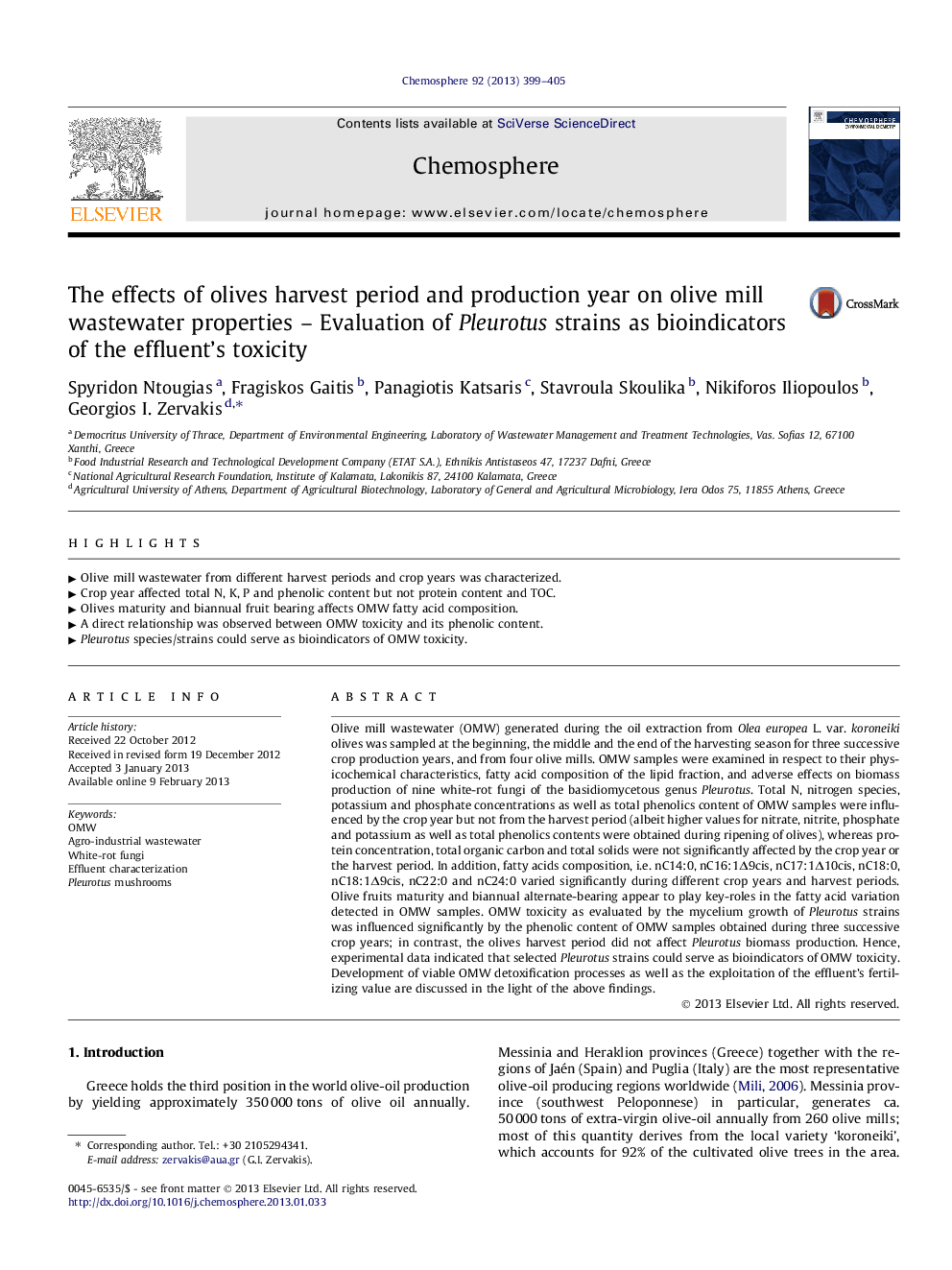| کد مقاله | کد نشریه | سال انتشار | مقاله انگلیسی | نسخه تمام متن |
|---|---|---|---|---|
| 6310403 | 1307467 | 2013 | 7 صفحه PDF | دانلود رایگان |

Olive mill wastewater (OMW) generated during the oil extraction from Olea europea L. var. koroneiki olives was sampled at the beginning, the middle and the end of the harvesting season for three successive crop production years, and from four olive mills. OMW samples were examined in respect to their physicochemical characteristics, fatty acid composition of the lipid fraction, and adverse effects on biomass production of nine white-rot fungi of the basidiomycetous genus Pleurotus. Total N, nitrogen species, potassium and phosphate concentrations as well as total phenolics content of OMW samples were influenced by the crop year but not from the harvest period (albeit higher values for nitrate, nitrite, phosphate and potassium as well as total phenolics contents were obtained during ripening of olives), whereas protein concentration, total organic carbon and total solids were not significantly affected by the crop year or the harvest period. In addition, fatty acids composition, i.e. nC14:0, nC16:1Î9cis, nC17:1Î10cis, nC18:0, nC18:1Î9cis, nC22:0 and nC24:0 varied significantly during different crop years and harvest periods. Olive fruits maturity and biannual alternate-bearing appear to play key-roles in the fatty acid variation detected in OMW samples. OMW toxicity as evaluated by the mycelium growth of Pleurotus strains was influenced significantly by the phenolic content of OMW samples obtained during three successive crop years; in contrast, the olives harvest period did not affect Pleurotus biomass production. Hence, experimental data indicated that selected Pleurotus strains could serve as bioindicators of OMW toxicity. Development of viable OMW detoxification processes as well as the exploitation of the effluent's fertilizing value are discussed in the light of the above findings.
⺠Olive mill wastewater from different harvest periods and crop years was characterized. ⺠Crop year affected total N, K, P and phenolic content but not protein content and TOC. ⺠Olives maturity and biannual fruit bearing affects OMW fatty acid composition. ⺠A direct relationship was observed between OMW toxicity and its phenolic content. ⺠Pleurotus species/strains could serve as bioindicators of OMW toxicity.
Journal: Chemosphere - Volume 92, Issue 4, July 2013, Pages 399-405